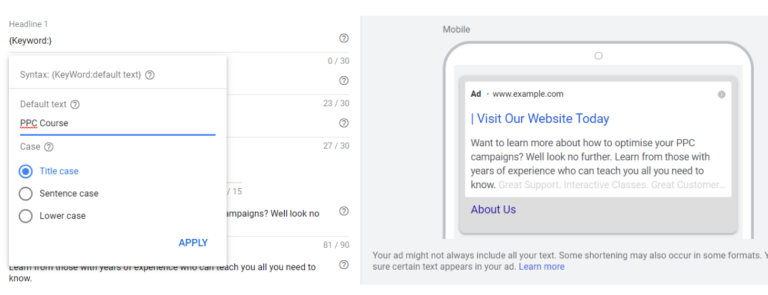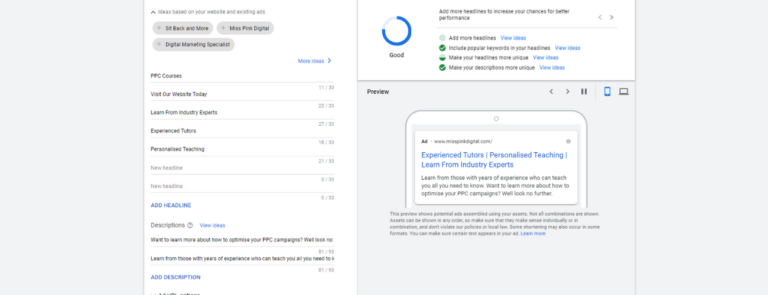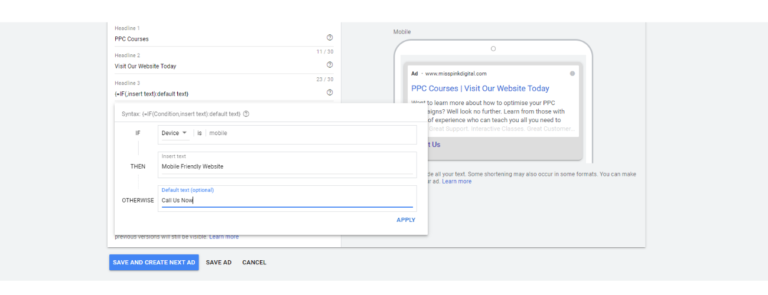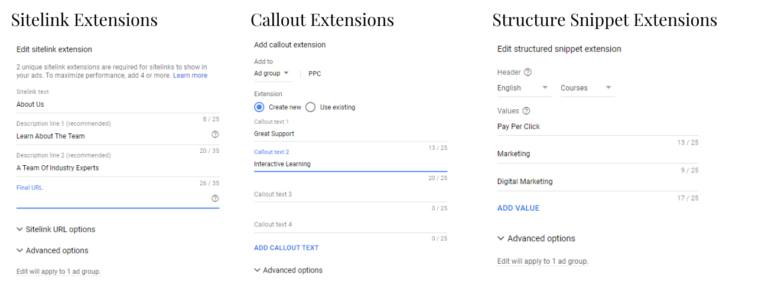How To Improve Your Keyword Quality Score

Your keyword quality score is an incredibly important aspect in your GoogleAds account. It can impact your ad positioning, impression share and your cost per click. With this in mind, to say optimising your account to improve your quality score would be beneficial is a slight understatement. In the below i’m going to go over what YOU can do to improve your quality score within your GoogleAds account.
What Determines Your Keyword Quality Score?
Before we get started, we need to look into what are the deciding factors when it comes to your keyword quality score. Without knowing this, it limits your knowledge on what you should be optimising. Your quality score can range from 0-10 (10 being the best) and is ranked based on whether the below three factors are above average, below average or average:
-Ad Relevance: How relevant your ad is to the keyword(s) you are targeting.
-Click-Through Rate: The number of clicks that your ad receives divided by the number of times that your ad is shown.
Landing Page Experience: The experience the user receives upon clicking your ad and landing on your site.
There are a number of columns relevant to quality score within GoogleAds, these can give you insight not only to what your quality score is, but also where you can improve and the history of your quality score.
Ad Relevance
Improving your ad relevance can be a hassle, especially when your keywords are particularly long tail. However there are a few things you can do to help with this.
- Implement single keyword adgroups (SKAGS)- It’s in the name but single keyword adgroups are when you only assign one keyword in each adgroup. This allows you to cater your ad around one keyword as opposed to multiple. Catering your ad to a single keyword not only improves ad relevance, it also makes ad/keyword management and optimisation easier in the long term.
- Ensure either your entire keyword or elements of your keyword is featured in the first headline of your ads- This not only indicates the relevance of your ad to Google, it also does to the user. The better the headline relevance, the higher the chances of generating a click, this crosses over nicely with improving the click-through rate (ctr).
- Implement DKI Ads- DKI stands for “dynamic keyword insertion,” these ad types are where your targeted keyword is dynamically inserted into the headline or description of your choice. These can be easily created within the ad creation by using the following formula: {KeyWord: Type Your Headline Here}

Expected Click-Through Rate
Improving the ECTR (expected click-through rate) aligns with improving the ctr (click-through rate). Both of these can take a while and will improve with testing and optimisation.
- Responsive search ads- These allow you to input a number of headlines and descriptions. This will allow more relevant messaging to be shown to the user, which in turn can improve your overall ctr on your ads.

- Split testing adcopy- Split testing adcopy will always be beneficial on a consistent basis. It will allow you to narrow in on not only what ads convert well, but also those which deliver a good ctr. Doing this will help you find the winning combination of ad messaging that resonates well with your target audience.
A great way to measure and keep track of adcopy performance is by labeling your ads based on their messaging. For example, labeling ads “ad version a, b, c, d” etc. where in which all ads labelled “ad version a” deliver a similar message and the same principles would be applied for ad version b, c and d. This will not only allow you to easily monitor performance, but also make simple ad optimisation changes, such as pausing under performing ad versions/create new ads based on what is performing well.
- Implement ads with IF functions- The implementation of these is very similar to DKI ads and allows you to cater ads to specific users such as mobile users. In the below I am telling those on a mobile device that the website is mobile friendly and those on a different device an alternative message. By telling users on a mobile that your site is optimised for them, indicates that they can expect a positive experience upon clicking your ad. This kind of personalisation can have a positive impact on ctr.

- Speaking of personalisation… This is another thing to consider!- Personalisation is a great way to reach out to your target audience and really cater your ads to the user. Everyday we see so much advertising that it is basically impossible to take it all in, meaning the more you can relate to the user, the more you will stand out from your competitors/entice the user to click.
- Display paths- Display paths appear at the end of your ads and tell the user what they can expect to see upon clicking on your ad(s). Giving the user further confirmation that the ad is relevant to what they are searching for will not only improve the chances of generating a click, it will also improve your ad relevance.

- An eye catching CTA- CTA stands for “call to action” and is a great way to guide the user on what they need to do next/entice them to do so. Please note that Google does have certain policies in place regarding both adcopy restrictions and call to actions, which can be found here.
- Ad extensions- Ad extensions are a great way to provide users with more information about your business. Whether that be services, prices or positive attributes that you want your target audience to know.
The following ad extensions that can help improve your ctr are available within the GoogleAds platform
Sitelinks- These take users to a specific page on your site that they may be interested in seeing more information on, whether that be a service page, meet the team page or contact page etc.
Structured Snippets- These provide additional information to the user regarding the services you provide or brands/products you sell etc.
Callout extensions- Can’t fit a positive USP in your ad? Well use callout extensions! These are the perfect way to further emphasise the great things about your business that you need the viewer to know!

Landing Page Experience
Improving your landing page experience certainly sounds like a challenge but when broken down it’s all about ensuring visitors from your ads receive a positive experience upon entering your site. Who doesn’t want that for potential prospects? With that being said, there are a number of ways you can improve on this to find out how you can optimise your landing pages for your PPC campaigns click the following link: How To Make PPC Friendly Landing Pages


